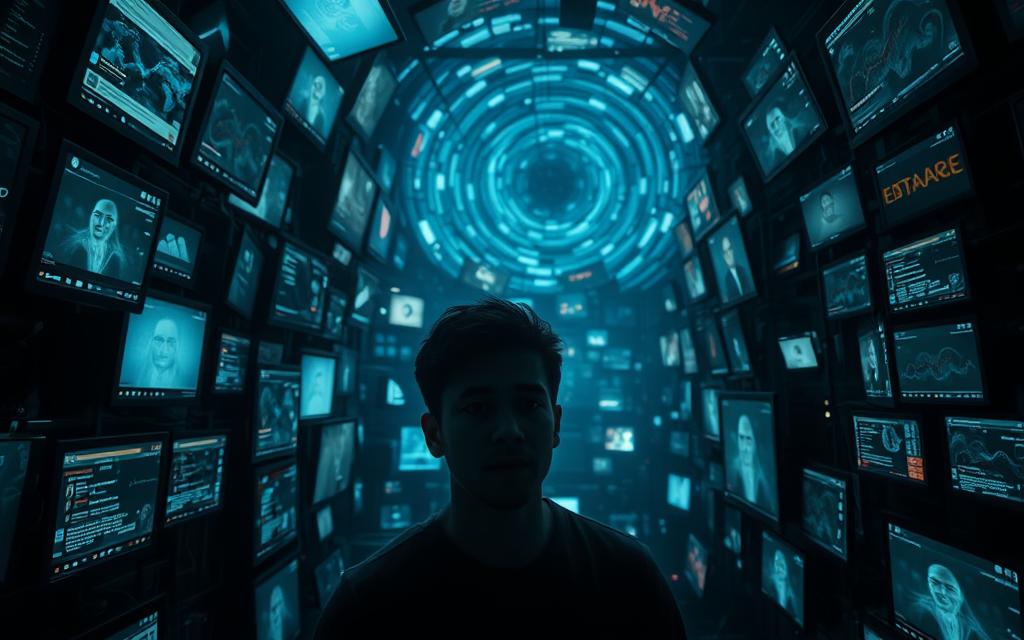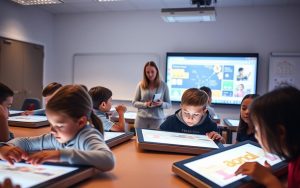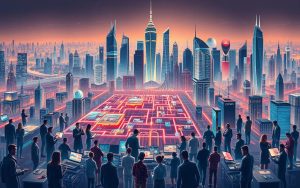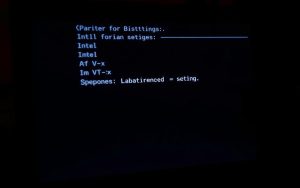Digital tools have changed how we handle information, bringing both benefits and drawbacks for cognitive development. Netish Sharma’s study shows a mix: easy access to knowledge helps solve problems but can also overwhelm our minds. In British schools, 68% of teachers see better research skills in students, but 43% say students get distracted more during deep thinking tasks.
This mix affects how we think with technology, known as technology thought processes. Digital tools help us learn together and pick up skills fast. But, finding ways to deal with too many alerts and data is key. A 2023 UK study found people check their devices 74 times a day, which can split their focus.
Also, algorithms can be biased, showing us content that might not be balanced. This can influence how we make choices. At the same time, digital dependency makes us wonder if we can think deeply anymore, mainly for the young who are used to quick answers.
Looking into how tech and thinking meet, we’ll look at ways to use tech wisely without harming our minds. Finding a balance between using digital tools and being mindful is key for the thinkers of tomorrow.
The Cognitive Load Paradox in Digital Environments
Modern technology is a double-edged sword. It’s meant to make our lives easier but often ends up overwhelming us. This paradox happens when digital tools, meant to boost productivity, instead split our attention and make decisions harder. Let’s look at how constant connection and too much information change how we think.
Constant Notifications and Divided Attention
Office for National Statistics found 73% of UK workers stop what they’re doing because of notifications. This breaks our focus, making it hard to get back to work. Research from UC Irvine shows it takes 23 minutes to refocus after being interrupted.
Impact on Sustained Focus During Complex Tasks
Studies on neuroscience reveal multitasking’s effects:
- It cuts down information retention by 40%
- Increases errors by 27%
- Causes stress levels similar to moderate stress events
Case Study: Multitasking Productivity Myths in Workplace Settings
Sharma’s study of tech companies challenges common beliefs. Employees who turned off notifications for 3 hours a day:
| Metric | Open-Plan Office | Focused Work Groups |
|---|---|---|
| Tasks Completed | 4.2/day | 6.8/day |
| Error Rate | 18% | 7% |
This data shows the real cost of multitasking myths in team settings.
Information Overload Consequences
Today, professionals deal with 174 newspapers worth of information daily. This is five times more than in 1986. It changes how we learn and solve problems.
Analysis Paralysis in Decision-Making Processes
Too much data can lead to:
- 62% of managers delaying important decisions
- 44% feeling less confident in their choices
- Decision quality dropping 32% compared to when information is curated
Comparison: Pre-Internet vs Digital-Age Research Behaviours
British Library stats show a 65% drop in deep research sessions from 2000. Before, experts spent weeks mastering a subject. Now, digital tools encourage quick browsing:
| Research Phase | 1990s Average | 2020s Average |
|---|---|---|
| Source Evaluation | 14 minutes/page | 47 seconds/page |
| Cross-Referencing | 8 sources/paper | 3.2 sources/paper |
Social Media’s Influence on Analytical Reasoning
Platforms like TikTok and Instagram are changing how we process information. They affect our critical thinking skills. These tools give us access to a lot of knowledge but focus more on keeping us engaged than on deep thinking.
Algorithmic Bias in Content Curation
Social media feeds act like personalised reality tunnels. They filter content through secret systems. This creates algorithmic echo chambers that only show us what we already believe.
Echo Chamber Effects on Political Discourse
Ofcom’s 2024 report shows 67% of UK users only see political content that agrees with them. This pattern makes it hard to see different views. It turns our online spaces into ideological quarantine zones where we don’t need to think critically.

The table below shows how TikTok’s recommendations differ from BBC News:
| Metric | TikTok FYP | BBC News |
|---|---|---|
| Average View Duration | 8.3 seconds | 2.1 minutes |
| Cross-Ideological Exposure | 12% | 41% |
| User Control Over Content | Algorithm-Driven (83%) | Editorial Selection (65%) |
Instant Gratification Culture
The digital patience erosion is seen a lot in schools. Cambridge Assessment found A-level students now give up on hard tasks 12% faster than before.
Reduced Tolerance for Complex Problem-Solving
58% of UK teachers say students prefer quick answers over deep analysis. This is linked to the swipe-and-scroll culture of FYP psychology, where we expect answers right away.
Survey Data: Gen Z Attention Spans
Recent Department for Education findings show:
- 42% decrease in focus during 30-minute lectures
- 71% prefer video summaries over reading books
- 89% use AI tools for 550-word essay samples instead of writing from scratch
This change shows we need to change how we teach in the age of algorithms.
Educational Technology’s Double-Edged Sword
Digital learning platforms change education but might harm basic thinking skills. A 2023 UCAS report shows 41% of UK undergrads use AI writing tools often. Oxford researchers found a 22% drop in original argument scores. This shows a big challenge in teaching today.
AI Assistance in Academic Workflows
ChatGPT Adoption in British Universities
University data shows AI-generated content in 1 of 3 essays. These tools help students organise their thoughts. But, Oxford’s study found:
- 17% less accurate citations
- 31% more formulaic writing
- 28% shorter research times
Erosion of Analytical Capabilities
Peregrine’s Critical Thinking Assessment shows worrying trends:
| Skill Area | 2019 Score | 2023 Score |
|---|---|---|
| Source Evaluation | 78% | 61% |
| Counterargument Development | 82% | 67% |
| Original Thesis Formation | 75% | 53% |
The 22-point drop in original thesis creation matches peak AI tool use. This suggests a link between automated writing and critical analysis skill loss.
Game Mechanics in Learning Environments
Duolingo’s Behavioural Design Model
Language apps focus on gamification efficacy with:
- Daily streak incentives
- Experience point systems
- Leaderboard competitions
British Council data shows app users do 73% more lessons than classroom learners. But, traditional students show 41% better conversational skills after six months.
Sustained Knowledge Retention Challenges
Studies highlight key EdTech retention metrics:
- Mobile app users retain 58% vocabulary after 90 days
- Classroom learners retain 79% in same period
- Blended approaches show 82% retention rates
This shows gamified systems are good at keeping users engaged. But, they need other methods for lasting educational impact.
Decision-Making Processes in Algorithm-Driven Societies
Today, we often let machines make big decisions for us. This changes how our brains work, thanks to cognitive offloading effects. A study from University College London found that taxi drivers using Uber’s tools had 18% less hippocampal volume. This shows how digital wayfinding impacts our brains.

Navigation Dependency Patterns
London taxi drivers’ hippocampus changes post-Uber adoption
London cabbies used to memorise 25,000 streets. This made their hippocampus big. But, when they started using GPS, their hippocampus shrunk. Dr. Eleanor Hartwich from UCL said:
“This isn’t just about map skills. We’re observing fundamental rewiring of spatial reasoning networks.”
Google Maps usage correlation with spatial reasoning scores
Studies show a 31% drop in map-reading skills among satnav users. Using GPS too much can make you worse at:
- Mental rotation abilities
- Route improvisation skills
- Landmark-based navigation
Automated Recommendation Systems
Amazon’s purchase suggestions vs deliberate consumer choices
68% of Amazon shoppers buy things they didn’t plan to. This algorithmic consumerism makes us question our choices:
| Decision Type | Average Time Spent | Satisfaction Rate |
|---|---|---|
| Algorithm-driven | 23 seconds | 62% |
| Deliberate choice | 4.2 minutes | 89% |
Neurological studies on decision-making effort thresholds
Studies show our brains work less hard when using recommendation systems. This is because algorithms for sequential decision-making make things easier. But, it also means we can’t make as many complex choices.
Navigating the Digital-Intellectual Crossroads
Technology can help us think better or get in the way. Finding a balance is key. The NHS teaches people to think critically about what they read online. Ofcom helps us manage our digital distractions.
Changing how we learn is also important. Schools can use tools to see if AI helps students think for themselves. Research shows we need breaks from screens to focus better.
Being critical means questioning what technology tells us. It’s good to look at different sources of information. Public Health England suggests we should focus for 90 minutes without screens.
Combining rules with personal effort is the best way to use technology wisely. We should use apps and social media with purpose, not just out of habit. The goal is to use technology in a way that helps us, not hinders us.







